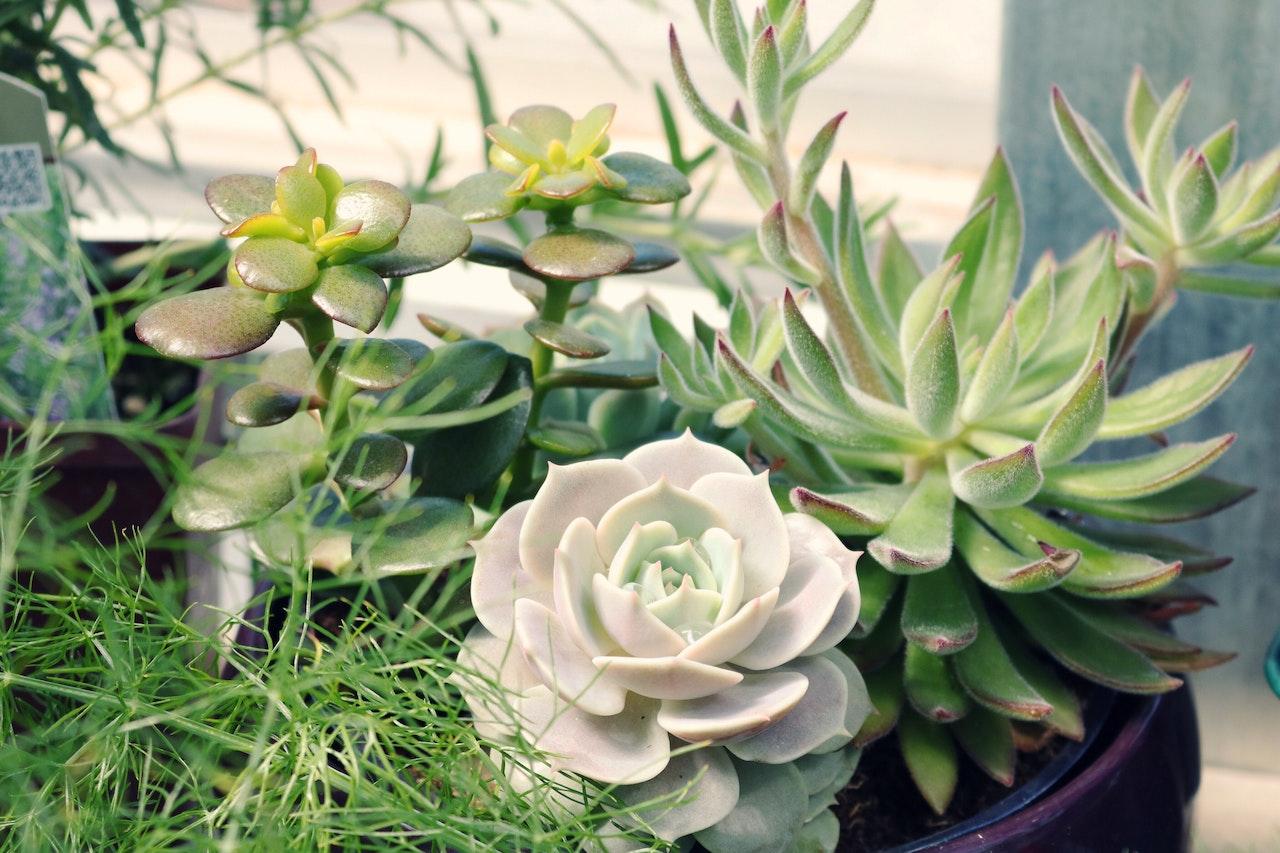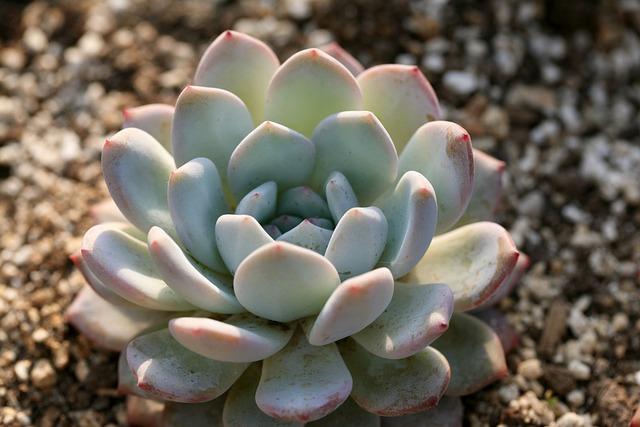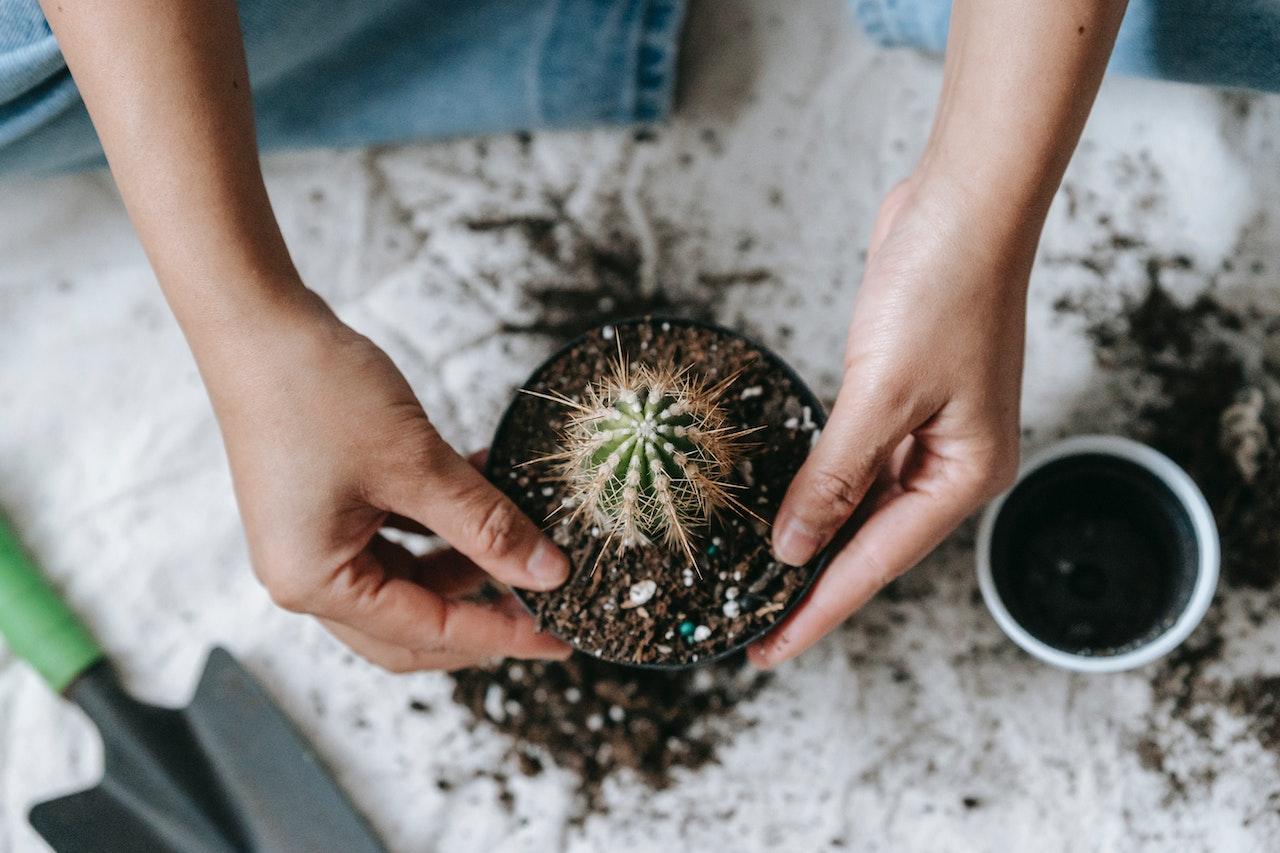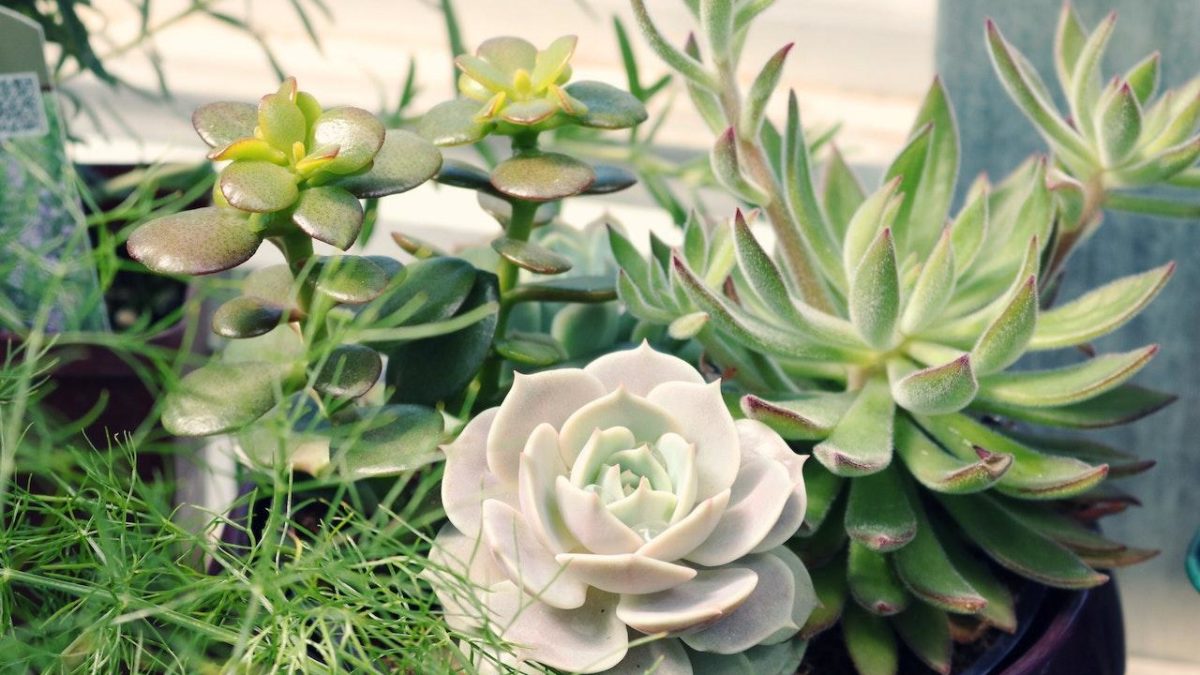Succulents come in a wide variety of shapes, sizes, and colors, so you can find one to fit any decor. They also have benefits that’ll suit your taste. These plants are native to arid regions and store water in their leaves, so they can survive for long periods without being watered.
Hence, if you’re looking for a low-maintenance, drought-tolerant houseplant, a spiky succulent is a great option!

Credit: Pexels
This blog post will examine the different types of spiky succulents you can get, where to buy them, and how to take care of them.
So, keep reading!
The Benefits Of Spiky Succulent Houseplants
Spiky succulent houseplants are a great way to add life to your home without having to worry about taking care of a delicate plant. These plants are easy to care for and only require minimal watering. They are also very tolerant of low light conditions, making them ideal for rooms that don’t get a lot of natural light.
Some of the most popular spiky succulent houseplants include Aloe Vera, Echeveria, and Sedum. These plants are all very easy to care for and will thrive in most homes.
If you are looking for a plant that is low maintenance and easy to care for, then a spiky succulent houseplant is the perfect choice for you.
Different Types Of Spiky Succulent Houseplants
1. Sedum
Sedum is a type of succulent that is characterized by its thick, fleshy leaves. They are often found in hot, dry climates and are known for their ability to store water. Sedum plants can be either erect or trailing, and they come in a variety of colors including green, blue, purple, and red.
2. Sempervivum
Sempervivum, also known as houseleeks, are succulents that typically have rosette-shaped leaves. They are native to Europe and Asia, and they come in a wide range of colors including green, red, brown, and yellow. Sempervivum is drought-tolerant and can thrive in both full sun and partial shade.
3. Aeonium
Aeonium is a type of succulent that is native to the Canary Islands. It’s characterized by its rosette-shaped leaves and its ability to store water. Aeonium comes in a variety of colors including green, yellow, pink, and red. They are drought-tolerant and can thrive in both full sun and partial shade.
4. Crassula
Crassula is a type of succulent that is native to southern Africa. They are characterized by their thick, fleshy leaves and their ability to store water.
Crassula comes in a variety of colors including green, red, pink, and purple. They are drought-tolerant and can thrive in both full sun and partial shade.
5. Kalanchoe
Kalanchoe is a type of succulent that is native to Madagascar. They are characterized by their thick, fleshy leaves and their ability to store water. Kalanchoe comes in a variety of colors including green, red, pink, and purple.
6. Euphorbia
Euphorbia is a type of succulent that is native to Africa. They are characterized by their thick, fleshy leaves and their ability to store water. Euphorbia comes in a variety of colors including green, yellow, pink, and red.
7. Aloe
Aloe is a type of succulent that is native to Africa. They are characterized by their thick, fleshy leaves and their ability to store water. Aloe comes in a variety of colors including green, yellow, pink, and red. They are drought-tolerant and can thrive in both full sun and partial shade.
8. Haworthia
Haworthia is also native to South Africa. They are characterized by their thick, fleshy leaves and their ability to store water. Haworthia comes in a variety of colors including green, white, and brown. They are drought-tolerant and can thrive in both full sun and partial shade.
9. Gasteria
Gasteria is a type of succulent that is native to South Africa. They are characterized by their thick, fleshy leaves and their ability to store water.
10. Sansevieria
Sansevieria is a type of succulent that is native to Africa. They are characterized by their thick, fleshy leaves and their ability to store water. Sansevieria comes in a variety of colors including green, brown, and black. They are drought-tolerant and can thrive in both full sun and partial shade.

With a little bit of care, spiky succulents can make a great addition to your indoor plants.
The Best Places To Buy Spiky Succulent Houseplants
1. Online
Etsy, Amazon, and eBay are all great online marketplaces to find spiky succulents. You can often find a wide variety of succulents to choose from, and the prices are usually very reasonable.
2. Local Nurseries
If you want to see the succulents in person before you buy them, then your local nursery is a great option. They will usually have a wide selection of succulents, and the staff will be able to give you helpful information about caring for them.
3. Home Improvement Stores
Many home improvement stores, e.g Home Depot and Lowe’s sell succulents. This is a great option if you are looking for a specific type of succulent, as they often have a wide variety of plants to choose from.
4. Online succulent nurseries
If you want to buy succulents from a specific nursery, then there are many online succulent nurseries that you can choose from. These nurseries specialize in succulents, so you will be able to find a wide variety of plants to choose from.
5. Local florists
Some local florists sell succulents, so this is a great option if you are looking for a specific type of plant. They often have a wide variety of plants to choose from, and the staff will be able to give you helpful information about caring for them.
How To Care For Spiky Succulent Houseplants
If you’re thinking about adding some spiky succulents to your home, there are a few things you need to know about how to care for these plants. These plants are definitely not low-maintenance, but with a little bit of care, they can thrive indoors.

Here are a few tips:
- Light: Spiky succulents need bright light to grow well. If you don’t have a lot of natural light in your home, you can supplement with grow lights.
- Water: These plants don’t need plenty of water, but they do need to be watered regularly. Allow the soil to dry out completely between waterings. If the leaves start to look wilted, that means the plant needs more water.
- Fertilizer: Spiky succulents need to be fertilized about once a month during the growing season. Use a balanced fertilizer and apply it according to the package directions.
- Pruning: These plants will need to be pruned occasionally to keep them looking their best. Simply cut off any dead or dying leaves or stems.
How To Pot Spiky Succulent Houseplants
- Pick a pot that is well-draining. Spiky succulents do not like to sit in wet soil, so make sure your pot has drainage holes in the bottom.
- Fill the pot with a cactus or succulent potting mix. You can find this at your local nursery or garden center.
- Choose a spiky succulent that is the right size for your pot. Make sure the plant will have room to grow.
- Gently remove the plant from its current pot. Be careful not to damage the roots.
- Place the plant in the center of the new pot. Fill in around the plant with potting mix.
- Water the plant thoroughly. Allow the soil to dry out completely between watering.
- Place the pot in a sunny spot. Spiky succulents need bright light to thrive.
How To Propagate Spiky Succulent Houseplants
There are different ways to propagate spiky succulent houseplants.
- Take a cutting from an existing plant. Cut a stem that has a few leaves on it, and make sure the cutting is at least a few inches long. Place the cutting in a cup of water and wait for it to grow roots. Once the roots are a few inches long, you can plant the cutting in a pot with well-draining soil.
- Another way to propagate spiky succulent houseplants is by divisions. This is when you take an existing plant and divide it into two or more plants.
To do this, carefully remove the plant from its pot and then gently pull it apart into smaller pieces. Each piece should have a few roots attached to it. Plant the divisions in separate pots with well-draining soil.
- You can also propagate spiky succulent houseplants from seed. Sow the seeds in a pot with well-draining soil. Water the soil, and then place the pot in a warm, sunny spot. The seeds will germinate in a few weeks. Once the seedlings are a few inches tall, you can transplant them into individual pots.
The Best Soil For Spiky Succulent Houseplants
There are a lot of different succulent plants that you can grow in your house, and each one of them has different soil requirements. However, there are some general things that you should keep in mind when choosing the best soil for your spiky succulents.

- One of the most important things to remember is that succulents need well-draining soil. That is, the soil should not be too dense or too sandy. A good way to test if your soil is well-draining is to stick your finger into it. If the soil sticks to your finger or feels dense, it is not well-draining and you should look for a different type of soil.
- Another important thing to remember is that succulents need soil that is high in organic matter. The soil should be rich in nutrients and be able to hold moisture. A good way to test if your soil is high in organic matter is to smell it. If the soil smells earthy and has a rich smell, it is high in organic matter.
The Best Fertilizer For Spiky Succulent Houseplants
There are a lot of different fertilizer options out there for spiky succulent houseplants. But which one is the best?
Well, it really depends on the plant and the specific needs of that plant. Some spiky succulents may need more fertilizer than others. And some may need a different type of fertilizer.
So, it’s important to do your research and figure out what fertilizer will work best for your spiky succulent houseplant.
- You can, however, use a slow-release fertilizer. This type of fertilizer is slowly released into the soil over time. This is a good option if you don’t want to have to worry about fertilizing your plant too often.
- Another option is to use a liquid fertilizer. This type of fertilizer is mixed with water and then applied to the soil. This is a good option if you want to be able to control how much fertilizer your plant is getting.
Whatever fertilizer you choose, be sure to follow the directions on the package. Over-fertilizing can be just as bad as not fertilizing at all.

Credit: Pexels
If you’re unsure about the fertilizer to use, ask a gardening expert or someone at your local nursery. They should be able to help you figure out what will work best for your plant.
How To Water Spiky Succulent Houseplants
Spiky succulent houseplants are a great way to add some interest to your indoor space. These plants are known for being low-maintenance, but they do need to be watered properly to stay healthy. Here are some tips on how to water your spiky succulent houseplants:
- Water your plants when the soil is dry. Stick your finger into the soil to check the moisture level. If the soil is dry to the touch, it’s time to water.
- Use room-temperature water. Cold water can shock your plants and cause them to drop their leaves.
- Water the soil, not the leaves. Be sure to direct the water at the base of the plant, not the leaves. Watering the leaves can cause them to rot.
- Allow the soil to dry out completely between watering. Do not water your plants more than they need. Over-watering can lead to root rot.
- If your plants are looking wilted or droopy, they may need more water.
Bonus Tips
- Place the spiky succulent houseplant in a sunny spot in your home.
- Water the plant when the soil is dry to the touch.
- Trim off any dead or dying leaves as needed.
- Propagate the plant by taking stem cuttings and potting them in moist soil.
Frequently Asked Questions
- What are spiky succulent houseplants?
Spiky succulent houseplants are a type of plant that’s known for its thick, fleshy leaves and sharp spines. These plants are native to the deserts of Africa and South America, and they are adapted to survive in hot, dry conditions.
- How do I care for a spiky succulent houseplant?
Spiky succulent houseplants are easy to care for, and they are a great choice for beginner gardeners. These plants need bright light and well-drained soil. Water your plant when the soil is dry, and be sure to use a pot with drainage holes to prevent root rot.
- What are some common problems with spiky succulent houseplants?
The most common problem with these plants is overwatering. Be sure to let the soil dry out completely between waterings, and do not water your plant more than once a week. If you see yellow leaves or soft stems, this is a sign of too much water.
- What are some common pests that attack spiky succulent houseplants?
Aphids, mealybugs, and scale insects are all common pests that can attack these plants. These pests suck the sap from the leaves and can cause the leaves to turn yellow or brown. If you see pests on your plant, you can remove them by hand or treat the plant with insecticidal soap.
- Are spiky succulent houseplants poisonous to pets?
No, these plants are not poisonous to pets. However, the sharp spines on the leaves can cause irritation if your pet comes into contact with them. If you have a pet that likes to chew on plants, it is best to keep this plant out of reach.
Conclusion
These are different types of spiky succulent houseplants that you can choose from. The plants have their benefits and will serve you well. With many different varieties and colors to choose from, you’re sure to find the perfect one for your home.
The post above contains all you should know about spiky succulent houseplants and how to get full benefits from them.
Michelle Wilde
Related posts
![]()
About Michelle Wilde
Michelle Wilde is a stay-at-home mom and avid plant lover. Armed with a post-graduate degree in Computer Science (no kidding!), she loves researching plants and landscapes. When she is not caring for her 4 kids, she spends time on her passion for plants. She blogs at www.indoorplantschannel.com, the trusted source for indoor plants.
Learn more
Subscribe
* You will receive the latest posts and updates about indoor plants!
Search
Recent Posts
Categories
- Beginner Guides (10)
- FAQ (206)
- General (2)
- How-To Guides (212)
- Indoor Plants (214)
- Pest Management (2)
- Plant Problem Solutions (4)
- Seasonal Growing (2)
- Specialized Environments (2)
- Specific Plant Care (3)
- Technical Growing (2)
